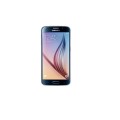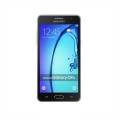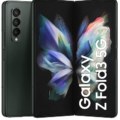- Home
- List of devices
- Samsung
- Samsung Galaxy Note 3
Samsung Galaxy Note 3
-
CPU:
-
RAM:
-
Storage:
-
Display:
-
Camera:
-
OS:
Samsung Galaxy Note 3 has unique design improvements that deliver a premium look and feel. A softly griped leather-like cover with delicate stitching on the back side of the phone lets you not worry about scratches or cracks.
Don’t stress anymore about organising the information and contents stored in your phone. GALAXY Note 3 allows you to easily track down and categorize images, videos and other contents by tapping the ‘Scrapbooker’ button in Air Command. Just circle the information or image that you want to save and move it into Scrapbook. It’s never been easier to categorize and design your own personalized Scrapbook.
Contents cannot be lost in GALAXY Note 3.
With S Finder, you can search your entire phone from hand-written memos to the web. Simply click the pen to access S Finder and then search by keywords and/or apply date, location or content filters from one starting point to find related images, videos, music, personal notes, documents, events or chats, even Help advice.
It’s easy with automatically saved dates and enabled location tags in the Camera, S Note, Scrapbook, Voice recorder.
Enjoy note taking now more than ever.
The new S Note lets you quickly scribble notes on extensive canvases, browse through them effortlessly and edit them beautifully without having to rewrite or redraw anything. The new S Note can also be synced with Evernote or a Samsung account to enable viewing from your PC or tablets. The Easy Chart function also transforms scribbled charts into professional-looking graphs instantly. Yes, this is now possible with the new S Note.
Specs
General
| Announced | 01 September, 2013 |
| Released | 01 September, 2013 |
| Status | Available |
Display
| Display Type <strong>Display Technology => </strong> A number of display technologies and types used in mobile phones => TFT (Thin Film Transistor), IPS (In-Place Switching), OLED (Organic Light Emitting Diode), AMOLED (Active-Matrix Organic Light-Emitting Diode), Super AMOLED (an even advanced version of AMOLED), Resistive Touchscreen (Resistive touchscreens contain two layer of conductive material with a very small gap between them which acts as a resistance), Capacitive Touchsceen (Capacitive touchscreen technology consists of a layer of glass coated with a transparent conductor) | Super AMOLED |
| Size | 5.7 inches |
| Resolution | 1080 x 1920 pixels |
| Pixel Density <strong>Pixel Density (PPI)</strong> is refers to the concentration of pixels on a particular display, measured in pixels per inch (ppi). Pixel density is calculated by dividing the diagonal pixel resolution of a display by its diagonal size, higher pixel density better display quality. | 386 ppi |
| Display Protection <strong>Display Protection => </strong> Gorilla Glass is a special alkali-aluminosilicate glass shield with exceptional damage resistance that helps protect mobile displays from scratches, drops, and bumps of everyday use, It is always better to go for a smartphone with Gorilla Glass for that added protection and peace of mind. | Corning Gorilla Glass 3 |
| Features | Capacitive touchscreen, Light sensor, Proximity sensor |
Hardware
| Chipset <strong>Chipset</strong> is a group of integrated circuits designed to perform one or a more dedicated functions, often with real time computing constraints, Popular smartphones are equipped with more advanced embedded chipsets that can do many different tasks depending on their programming. | Qualcomm Snapdragon 800 (N9005, N9002)/ Exynos 5 Octa 5420 (N9000) |
| CPU <strong>CPU</strong> (Central Processing Unit) mostly known as processors, CPU processes instructions in order to carry out certain functions that make your device operate properly. Processors are often described as the brain of computers, smartphones and tablets, Smartphones and tablets rely on processors to carry out their every task, Processors are an incredibly important factor in selecting any type of computing device, including your smartphone. | Quad-core 2.3 GHz Krait 400 |
| GPU <strong>GPU</strong> (Graphics Processing Unit) is a single-chip processor designed to rapidly manipulate and alter memory to accelerate the creation of images in a frame buffer intended for output to a display, This includes things such as lighting effects, object transformations, and 3D motion. | Adreno 330 (N9005, N9002)/ Mali-T628 MP6 (N9000) |
| RAM (Memory) <strong>RAM</strong> (Random Access Memory) is a type of computer memory that can be accessed randomly, any byte of memory can be accessed without touching the preceding bytes that allows information to be stored and accessed quickly from random locations. RAM is the most common type of memory found in computer systems, smartphones, tablets and other electronic devices. | 3 GB |
| Internal Storage <strong>Internal Storage</strong> is a data storage space (flash memory) mostly used in smartphones, tablets and other electronic devices where operating system, apps, music, photos, videos, files and other user data Is stored. | 16/32/64 GB |
| Card Slot <strong>Memory Card Slot</strong> is a special slot for inserting a memory card. Memory cards allow you to expand the phone's built-in memory, A memory card (sometimes called a flash memory card or a storage card) is a small storage medium used to store data such as text, pictures, audio, and video, for use on small, portable or remote computing devices such as mobile phones, mp3 players, digital cameras. | Yes, microSD, up to 128 GB |
| Sensors <strong>Sensors</strong> are electronic components that detects and responds to some type of input from the physical environment. The specific input could be light, heat, motion, moisture, pressure and location, The output is generally a signal that is converted to use in computing systems, a location sensor, such as a GPS receiver is able to detect current location of your electronic device. | Accelerometer, gyro, proximity, compass, barometer, temperature, humidity, gesture |
Battery
| Battery Type <strong>Battery Type => </strong> Cell phones run on various kinds of batteries depending on the manufacturer, phone size or shape and features. There are basically four types of cell phone batteries => Lithium Polymer, Lithium Ion, Nickel Metal Hydride and Nickel Cadmium. | Li-Ion (Lithium Ion) |
| Capacity <strong>Battery Capacity</strong> is a measure (typically in Amp-hr) of the charge stored by the battery, and is determined by the mass of active material contained in the battery. The battery capacity represents the maximum amount of energy that can be extracted from the battery under certain conditions. | 3200 mAh |
| Standby <strong>Standby Time</strong> is the total amount of time that you can leave your is fully charged, turned on and ready to send and receive calls or data transmissions before completely discharging the battery. | Up to 420 hrs |
| Talk Time <strong>Talk Time</strong> is the longest time that a single battery charge will last when you are constantly talking on the phone under perfect conditions, Ambient temperature and highly dependent on the cellular network environment such as the distance to the closest cell network tower. | Up to 21 hrs |
Camera
| Primary <strong>Camera</strong> is able to capture photographs and usually videos, The most important characteristics of a camera are the resolution (measured in megapixels), lens focus type (fixed or automatic), higher megapixel cameras are known to capture higher quality photos, but not always a good measurement of the photos quality. | 13 mega pixels |
| Camera Features | Dual Shot, auto focus, Simultaneous HD video and image recording, geo-tagging, touch focus, face and smile detection, image stabilization, panorama, HDR |
| Secondary | Yes, 2 MP, 1080p@30fps, dual video call |
| Image | 4128 x 3096 pixels |
| Video | Yes, 2160p@30fps, 1080p@60fps, 720p@120fps |
| Flash <strong>Flash Light => </strong> There is commonly two types of flash lights are used in camera mobile phones, LED Flash (LED flash offers lower power consumption with drive circuitry that takes up very little room, LEDs can be strobed faster than any other light source), Xenon Flash (xenon flash produces an extremely intense full-spectrum white light for a very short duration) | LED flash |
Design
| Type <strong>Design Type</strong> called form factor refers to a mobile phone's size, shape, and style as well as the layout and position of major components of phone. There are three major form factors seen in mobile phones => bar phones, folding phones and sliding phones. | Bar |
| Dimensions | 151.2 x 79.2 x 8.3 mm (5.95 x 3.12 x 0.33 in) |
| Weight | 168 g (5.93 oz) |
| Colors | Black, White, Pink, Merlot Red, Rose Gold Black, Rose Gold White |
Network
Software
| Operating System <strong>OS => </strong> Every computer system run on a base software called Operating System (OS). Operating System controls all basic operations of the computer (such as smartphone, PDAs, tablet computers and other handheld devices). The Operating System allows the user to install and run third party applications (apps), apps are used to add new functionality to the device. | Android v4.3 (Jelly Bean), upgradable to v4.4.2 (KitKat) |
| User Interface <strong>UI</strong> or user interface of a device is the look and feel of the on-screen menu system. How it works, its color scheme, how it responds to button presses, all of these things are part of the user interface. | TouchWiz |
Connectivity
| Bluetooth <strong>Bluetooth</strong> is a wireless communications technology for exchanging data between mobile phones, headsets, computers and other network devices over short distances without wires, Bluetooth technology was primarily designed to support simple wireless networking of personal consumer devices. | Yes, v4.0 with A2DP, EDR, LE |
| Infrared <strong>Infrared</strong> connectivity is an old wireless technology used to connect two electronic devices. It uses a beam of infrared light to transmit information and so requires direct line of sight and operates only at close range. | |
| Wi-fi <strong>Wi-Fi</strong> is a popular wireless networking technology using radio waves to provide high-speed network connections that allows devices to communicate without cords or cables, Wi-Fi is increasingly becoming the preferred mode of internet connectivity all over the world. | Wi-Fi 802.11 a/b/g/n/ac, dual-band, Wi-Fi Direct, DLNA, Wi-Fi hotspot |
| USB | microUSB v3.0 (MHL 2), USB Host |
| GPS <strong>GPS</strong> The Global Positioning System is a satellite-based radio navigation system, GPS permits users to determine their position, velocity and the time 24 hours a day, in all weather, anywhere in the world, In order to locate your position, your device or GPS receiver must have a clear view of the sky. | Yes, with A-GPS support and GLONASS |
| NFC <strong>NFC</strong> (Near field communication) is a set of standards for smartphones and similar devices to establish peer-to-peer radio communications with each other by touching them together or bringing them into proximity, usually no more than a few inches. |
Benchmarks
Reviews
-
Contents cannot be lost in GALAXY Note 3
With S Finder, you can search your entire phone from hand-written memos to the web. Simply click the pen to access S Finder and then search by keywords and/or apply date, location or content filters from one starting point to find related images, videos, music, personal notes, documents, events or chats, even Help advice.
It’s easy with automatically saved dates and enabled location tags in the Camera, S Note, Scrapbook, Voice recorder.



